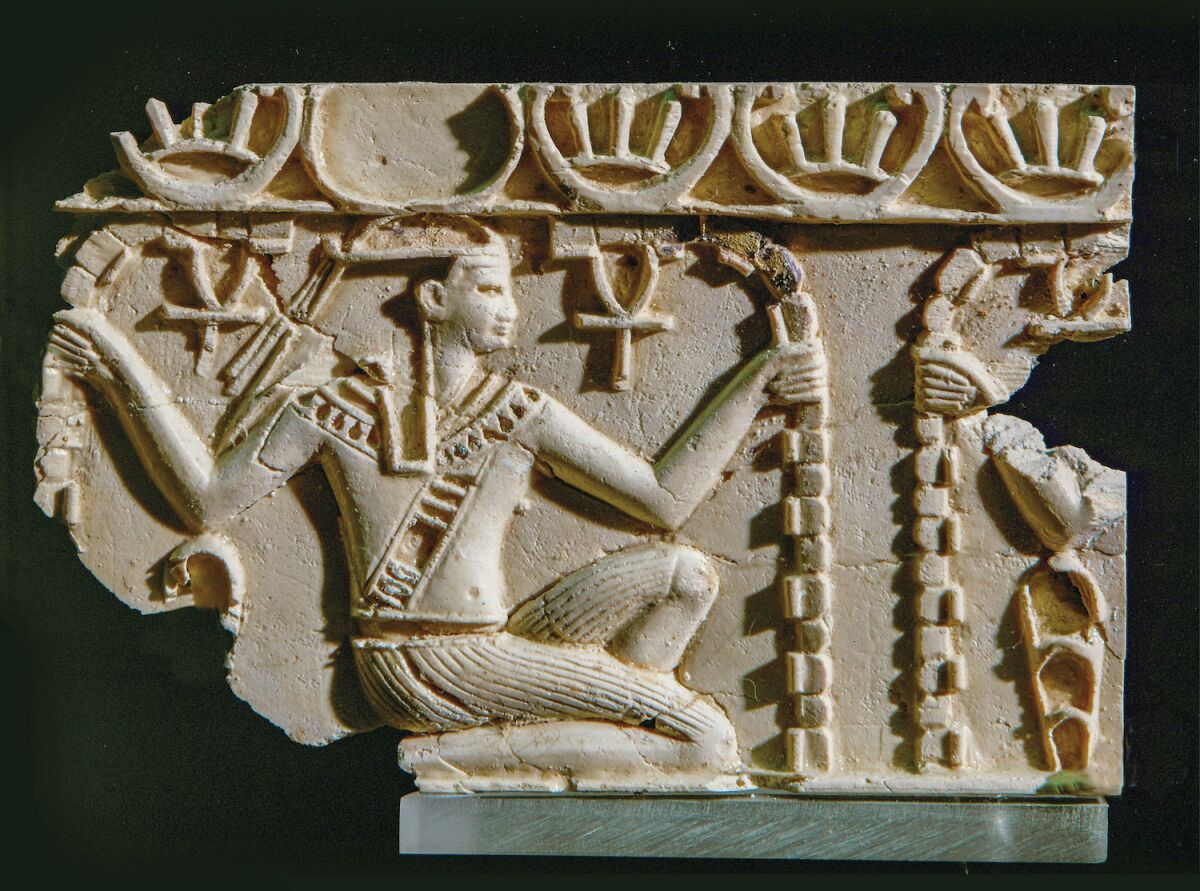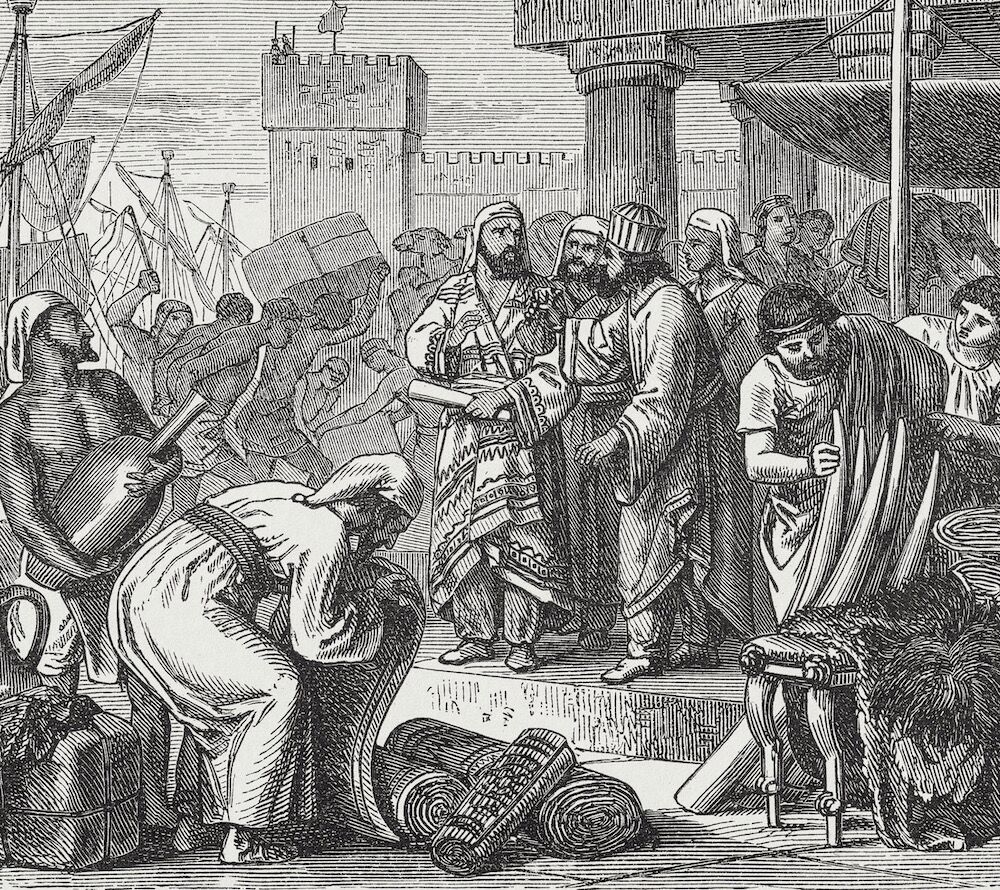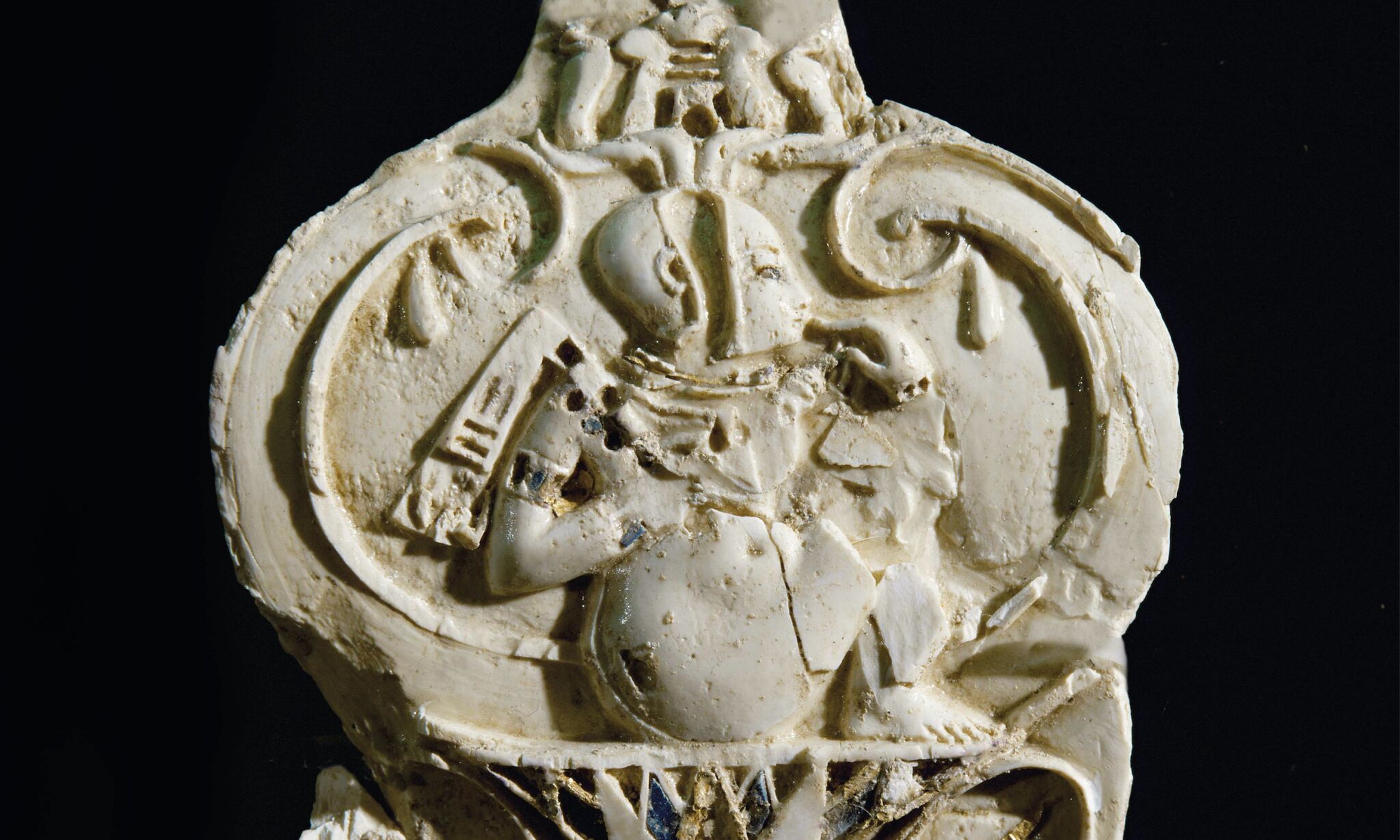In a series of excavations from 1908 to 1935, archaeologists unearthed over 12,000 ivory pieces in the ancient Israelite capital city of Samaria. While there is some debate over the precise age of the artifacts, most scholars agree that they date to the eighth or ninth century b.c.e., most likely around the time of Israelite King Ahab (circa 870–850 b.c.e.)
According to the biblical book of Kings, Ahab “did yet more to provoke the Lord, the God of Israel, than all the kings of Israel that were before him” (1 Kings 16:33). Together with Jezebel, his pagan Phoenician wife, Ahab established Baal worship in Samaria and persecuted Elijah the prophet. Because of these and other wicked acts, he is arguably Israel’s most infamous ruler.
However, one lesser-known detail about Ahab is that he built a spectacular “ivory house” in Samaria: “Now the rest of the acts of Ahab, and all that he did, and the ivory house which he built, and all the cities that he built …” (1 Kings 22:39). Could some of the 12,000 ivory pieces found in Samaria be remnants of Ahab’s “ivory house”?
Archaeologists John and Grace Crowfoot, who wrote the original excavation report, Early Ivories From Samaria, in 1938, thought this a likely possibility. “[The ivories’] intrinsic interest,” they wrote, “as works of art and craftsmanship, and their well-established place in the history of Samaria, give them peculiar significance … and give them a date so close to that of Ahab that they may safely be attributed to the ‘ivory house that he built’ as described in the book of Kings.”
The Crowfoots clarified that the Hebrew word “house” in verse 39 most likely refers to a room or pavilion within the palace complex. Furthermore, taking into account the architectural customs of the day, “ivory house” most likely means the room had ivory embedded in its wall panels—not that the entire structure was made of ivory.
According to modern sources, over 500 of the ivory pieces were found in the Samarian palace complex alone. This seems to corroborate the Crowfoots’ viewpoint, though it isn’t definitive proof. Whether the ivories were used in Ahab’s “ivory house” or not, one thing is clear: If over 12,000 ivories have survived to the present, Samaria must have had an enormous quantity of ivory!
Where did Israel get all this ivory?
Most scholars have assumed the ivories were carved in Phoenicia and imported to Israel. However, this view has been challenged by some in the archaeological community, especially in recent decades. For example, Dr. Liat Naeh wrote, “When analyzing excavation results, it is generally posited that finds are local unless there is reason to suspect that they were imported.” According to Naeh, there is not enough archaeological evidence to prove the ivories were imported. Furthermore, assuming the ivories originated in Phoenicia shows bias toward the biblical record, which may cause archaeologists to overlook the Levant’s local ivory tradition.
To be fair, much of the early scholarly consensus around Phoenician importation was based on the Bible. This is logical, since biblical references to Israelite-Phoenician trade are so plentiful.
Exodus records that the Israelites used Phoenician purple to decorate their priestly garments and the tabernacle (Exodus 28:4-8; 26:31; 36:35). 2 Samuel 5:11 records that Phoenician King Hiram of Tyre sent cedar timbers, carpenters and stonemasons for the construction of King David’s palace. The book of Kings says Hiram also sent a delegation to David’s son Solomon, congratulating him on being anointed king (1 Kings 5:15). This friendly diplomacy led to the cooperation of Israelite and Phoenician builders during the construction of Solomon’s temple (verse 32).
Perhaps the most significant biblical passage relating to the Samarian ivories is found in 1 Kings 10: “For the king had at sea a navy of Tarshish with the navy of Hiram; once every three years came the navy of Tarshish, bringing gold, and silver, ivory, and apes, and peacocks” (verse 22). Here, ivory is specifically mentioned as one of the goods imported by a joint Israelite-Phoenician navy during the time of Solomon.
If one considers the Bible a credible historical source, then it is obvious many of the Samarian ivories almost certainly came from Phoenicia. But the Phoenician-importation hypothesis does not rest solely on the biblical text. More evidence for the theory can be found by examining the ivories themselves.
According to Early Ivories From Samaria, Egyptian cultures had an “all-pervasive” influence on the design of the ivories. For example, one group of medallions depict the Egyptian god Horus seated on a lotus flower, surrounded by a variety of other Egyptian symbols. Another ivory depicts Hah, the Egyptian god of the sky. Other ivories bear depictions of Isis, Nephthys and winged sphinxes.

How did Egyptian imagery end up in the palace at Samaria? It seems unlikely that Ahab or some other Israelite ruler would have authorized such carvings, since biblical and archaeological evidence both report the Israelites worshiping Canaanite gods (notably Baal), not Egyptian gods. It is also unlikely that the carvings were imported directly from Egypt. “Many of the subjects are definitely copied from Egyptian models,” wrote John and Grace Crowfoot, “though there is not one of the plaques which could be mistaken for an Egyptian original.”
If neither the Israelites nor the Egyptians carved the ivories, then who did? It seems logical to point to the Levantine people most known for appropriating and spreading Egyptian culture and religion: the Phoenicians.
The simplest and most probable explanation for the Samarian ivories, then, is that many, if not all of them, were imported from Phoenicia and used in Ahab’s palace. If this theory is true, the ivories corroborate two significant biblical claims: that the Phoenicians imported ivory to Israel (1 Kings 10:22), and that King Ahab built a spectacular “ivory house” in Samaria (1 Kings 22:39).
But the presence of beautifully carved ivories in Samaria corroborates another biblical account, as well: the writings of the Prophet Amos. Amos lived roughly a century after Ahab, during the reign of King Jeroboam ii of Israel (around 750 b.c.e.). The book of Amos describes the sins of the Israelite kingdom and prophesies vivid details of its impending Assyrian captivity. “Therefore thus saith the Lord God: An adversary, even round about the land! And he shall bring down thy strength from thee, And thy palaces shall be spoiled” (Amos 3:11). “Palaces” in this reference would no doubt include Ahab’s ivory house. In fact, verse 15 specifically warns that “the houses of ivory shall perish.” Putting these two verses together implies a prophecy that Ahab’s ivory house—along with other ivory houses that presumably existed at the time—would be sacked and destroyed.

Does the archaeological evidence corroborate this? According to John and Grace Crowfoot, most of the ivories were found “about 3 meters below the surface, embedded in a mass of sticky yellowish clay which was evidently composed of disintegrated mud bricks: Fragments of one or two bricks of the same color and texture were found near. … It was plain that the lump in which the ivories lay had been moved en bloc …and it seems reasonable to conjecture that the clay itself came from the walls of the house where the ivories had once stood.” In other words, ivory that once decorated the Samarian palace walls was shattered along with those walls and ultimately dumped in some other location within the palace, bearing the marks of a violent sacking and destruction.
Early Ivories From Samaria relates a small caveat to this assertion: Excavators found shards of Hellenistic pottery near the pile of rubble that contained the ivory fragments. This led John and Grace Crowfoot to believe the rubble was moved during or after the Hellenistic period. However, given the mess of walls and foundations from vastly different time periods found on the Samarian acropolis, it seems likely that the pottery may have been left by Hellenistic-period peoples moving the ruins of the palace to clear space for buildings of their own.
That the Assyrians, not the Greeks, sacked Ahab’s ivory house is also corroborated by another piece of archaeological evidence. After looting the palace at Samaria, it seems logical that the Assyrians would take their spoils back to Assyria. Many ancient wall reliefs depict Assyrian soldiers parading their captives and war spoils through city streets. It is almost certain that the Assyrian conquerors did this with their Israelite captives and spoils, including ivory from the palace at Samaria. If this is true, one would expect to find large ivory troves somewhere in Assyria.
Archaeologists have discovered over 1,000 ivory carvings dating to the time of Ahab in the ruins of Nimrud, Assyria’s ancient capital. According to Dr. Liat Naeh, the Nimrud ivories were “conspicuously outlandish … within an Assyrian setting” and “speculated to represent diplomatic gifts or tributes resulting from trade, war spoils or Assyrian commissions from traveling artists.” The Nimrud ivories have the exact same architectural style and Egyptian influence as those found in Samaria! Once again, archaeology is in harmony with the biblical record.
While some archaeologists continue to argue that the Israelite-Phoenician alliance is overstated in the Bible or that Ahab’s ivory house is a creation of myth, the archaeological record indicates otherwise. While the biblical explanation for the Samarian ivories may not be absolutely definitive, it is still the simplest, most logical explanation. And as any good scientist will tell you, the simplest explanation is usually the right explanation.

